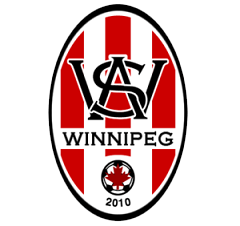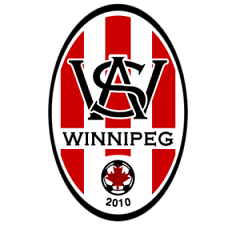In today’s youth soccer world many young athletes are striving to attain excellence. As a result developmental and talent identification programs have gained huge popularity. Sadly however, there remains a lack of continuity among these programs and worse many of these programs are just empty promises. The net result of these substandard developmental and talent identification programs is often players leaving beautiful game at very young ages.
Further, the success rate of developmental and talent identification programs have rarely been assessed. The validity of the models these programs employ remain debatable. It should be advocated that developmental and talent identification programs be dynamic and interconnected. These programs need to take into consideration the current maturity status of an individual and the potential for that individual to develop rather than to exclude children at an early age. Finally, more representative real world tasks should be to focus on the INDIVIDUAL not the team and also the focus should be on developed and employed to increase the effectiveness of these developmental and talent identification programs.
Canadian youth sports are far too often focused on talent selection than talent identification.
We say we are developing youth athletes for the future, but all too often we are using them to balance the budget. The today’s soccer system will select the currently talented athlete that will help then win now, because if they do not, the club down the road will grab that talent and win often resulting in our best players leaving. Does this sounds familiar? We are not identifying and developing the youth athletes that are most likely to become elite competitors when they are fully developed physically (after puberty). We are selecting the youth athletes that are currently performing at an elite level, however often these youth athletes do not have the characteristics needed for long term elite performance.
How can we fix this?
Here are a few simple thoughts for youth soccer, that to be honest, should not be difficult to implement.
Firstly, stop cutting players at young ages, just do not do it and introduce Fair Play Rule!
Instead develop large numbers of players and not just the elite performing players. Offer all youth athletes and parents a choice. Allow them to choose their level of commitment. For example levels such as A, B or C listed below:
- Practice 1 time a week plus a minimum of 1 game
- Practice 2 to 3 times a week plus a minimum of 1 game
- Practice unlimited times a week plus a minimum of 1-2 game
Secondly, we need to consider lowering and limiting the number of players per squad.
Focusing on developing all players at the youngest ages with particular attention given to helping the less skilled players. Help these youth athletes to develop technically by limiting squad-size.
Once these youth athletes finish developing physically, soccer programs will have a much larger pool of adequately skilled athlete to choose from.
Thirdly, establish a youth soccer national academy league.
By starting this new National Academy Soccer stream and league, we will acquire a better understanding of the programming, align our player development system and unify our vision for growing the game in Canada.
In this league will teach and encourage coaches to develop talent rather than try and win immediately (there are so many clubs doing this that it is not even funny)!
Lastly, educate the soccer establishment – the problem with youth soccer is not competition.
The problem is the attitude of the boards,coaches and parents toward competition.
These ideas are just a start. We need to start making some dramatic changes to our youth soccer system. If we do not, soccer countries from around the world catch up and eventually surpass the success enjoyed by our Canadian women’s soccer program. The Canadian Soccer Association and most of the provinces, including Manitoba, focus on the elite soccer programs instead of promoting more the grassroots soccer by pointing out the long term benefits.
Canadian soccer is not among the elite nations in men soccer… yet.
The main reason is our soccer development culture. The good news is we can close the gap by implementing the ideas suggested above.
Why make all these changes?
So our soccer programs and schools will eventually have larger numbers of skilled athletes to choose from, as well our society as whole will benefit from much healthier and more well rounded youth. We will have families who are less stressed both financially and emotionally, because their kids can just be kids again. These families will not feel the pressure to have their 10 year olds travelling 2,000 miles to play a game. And finally we will allow coaches to actually coach, so they can develop both better people and better athletes.
Additional benefits are a large pool of skilled players. Lower costs. Less time devoted to youth sports and more to family and school. More success for our national team programs.
Elite athletes want to play and practice more… these athletes understand that more practice will help them to achieve their dreams. Whatever those dreams. The large expectations equals more practice.
Youth athletes with more modest expectations, require smaller amounts of practice.
Finally, more practicing requires better quality coaching and as mentioned in my previous blog… Coaching must match the expectations of the athletes.
GOALS FOR PRACTICE, GAMES AND SEASON
Building the player’s CREATIVITY and skill base continues to be the most important goal of the season. At this age, this can be done through the introduction of a few more players in the games the coach sets up. Depending on the skill level of the group, 3 v 3 to 5 v 5 plus goalkeepers should be the range during practice. Keep in mind that even the more competent players will not be working effectively as a group once the numbers get beyond 5 v 5. In the smaller numbers, emphasis must still be on creating 1 v 1 or 2 v 1 duels on the field. These are key situations that will continue to confront players throughout their career. Gaining competence and mastery over these numbers is the key to preparing players for the future. What I hear I forget, What I hear and see I remember a little; What I hear, see and ask questions about or discuss with someone else, I begin to understand; What I hear, see, discuss and do, I acquire knowledge and skill; What I teach to another I master. (Adapted from the Chinese Philosopher Confucius)
To affect change in Canadian soccer a shift in coaching methodology needs to take place. The development of creative, intuitive players is greatly impacted by coaching style. When conducting training sessions there needs to be a greater reliance on game oriented training that is player-centered. Enabling players to explore and arrive at their own solutions. This is in contrast to the coach-centered training that has been the mainstay of coaching methodology in Manitoba and Canada.
GAME-CENTERED TRAINING DEFINED
Game-centered training implies that the primary training environment is playing games as opposed to training players in a drill-type environment. There is a time for a more direct approach to coaching, where players need more guidance and direction to develop. However, if the goal is to develop creative players who have the abilities to solve problems and interpret game situations on their own, then a game-centred guided discovery approach will need to be employed. This approach taps into the essentials that are always present within the team. Players want to play and enjoy playing the game first and foremost. The game is used as a training tool to allow players to get comfortable with the pace, as well as the physical and mental demands that competition place on an athlete. Players play because they enjoy the competition and the game. They have a passion for the game. They like to compete. This is where they find and express their joy and creativity.
The Brazilians have always been noted for their touch, creativity, dynamic and instinctive play. Their individual brilliance with the ball sets them apart from the rest of the world. Allowing for uninterrupted play during training times helps to develop these characteristics in players. These characteristics are learned on the “streets” without the guidance or even presence of a coach. This opportunity must be provided for the players. The prevailing culture of our society must be to provide players with opportunities to develop on their own the Canadian way!
CONCLUSION
We will continue to see smaller nations closing the gap and eventually surpassing our Canadian woman’s team success unless we start making some dramatic changes to our youth soccer system.
Canadian and Manitoban soccer program are not elite… yet. We can be recognized as elite, but there is much work to do. There are many benefits to making these changes. Our clubs and schools will enjoy larger numbers of skilled athletes, as well as the additional benefit of healthier youth. We will have families who are less stressed emotionally and financially, because their kids can just be kids again. We will allow coaches to actually coach letting them develop better athletes and soccer players.
There will be an abundance of skilled players. Lower participation costs. There will be less time devoted to youth sports and more time to family and school. There will be more success for our national teams and elite athletes, because they understand that the amount of practice directly relates to them to achieving their dreams… whatever the dreams. The smaller the dreams the smaller amount of practice needed. The bigger the dreams the larger the amount of practice that is needed. Simple.
Quality coaching with a strong focus on the technical, tactical, physical and psychological development of individual players on a pathway towards maximizing their full potential at whatever their level:
- Recreational player
- Competitive player
- Performance player
- Elite player
Tailor curriculum to provide players with a fun, energetic and competitive environment focused on individual player development .
Unfortunately in Canada there is way to much competition among the so called DEVELOPMENT PROGRAMS. We need to help identify and evaluate strategies for performance enhancement but not by cutting players. Canadians should strive to be recognized as leaders in providing the best soccer developmental programs for all skill levels. Nurturing future players by focusing on all levels of soccer with special emphasis on the grassroots level.



